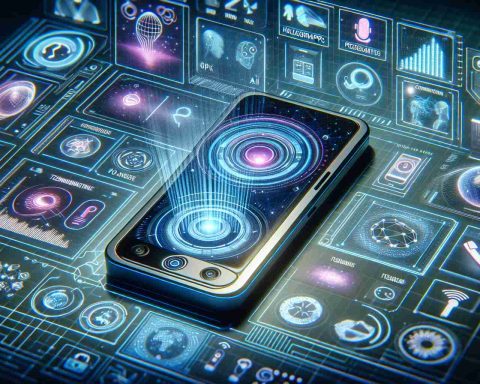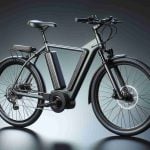In the ever-evolving landscape of electric vehicle (EV) technology, Tesla continues to lead with its innovative approaches to battery design and efficiency. One of the most discussed developments is Tesla’s 4680 battery cell, unveiled in 2020 during its Battery Day event. With promises of higher energy density, faster production, and significant cost reductions, there’s a growing conversation about whether the 4680 battery can be classified as a solid-state battery.
First, it is essential to understand what a solid-state battery is. Solid-state batteries use solid electrolytes instead of conventional liquid or gel electrolytes found in traditional lithium-ion batteries. This technology can potentially offer better energy density, enhanced safety features, and longer life cycles. Tesla’s 4680 battery, however, is fundamentally based on liquid electrolyte technology, which means it does not fit the definition of a solid-state battery.
Tesla’s 4680 battery cells are cylindrical, measuring 46 mm in diameter and 80 mm in height, which is where the name “4680” comes from. These cells are expected to provide a significant increase in range per charge, alongside improved thermal management and structural support when integrated within the vehicle’s architecture. The company’s innovative manufacturing techniques, including the tabless design, allow for reduced internal resistance and increased efficiency, but these innovations do not equate to the characteristics of solid-state technology.
Although the 4680 cells are not solid-state, they hold promising advancements in energy density and manufacturing efficiency. Tesla claims that the new design could enable a range of over 500 miles on a single charge in future models. In addition, Tesla has emphasized a simplified production process, which aims to curb costs significantly. This is particularly important as the EV market expands and consumer demand for affordable electric vehicles increases.
Furthermore, while solid-state batteries have garnered attention as the next big breakthrough in energy storage, their commercial viability is still under development. Several companies globally are working on solid-state technologies, but widespread availability and practicality are still years away. This context highlights the significance of Tesla’s advancements with the 4680 battery—providing substantial improvements in current lithium-ion technology while awaiting the future possibilities of solid-state designs.
In conclusion, while Tesla’s 4680 battery represents a leap forward in lithium-ion battery technology, it is not a solid-state battery. Instead, it embodies the evolving strategies of optimizing current technologies to enhance performance and affordability in electric vehicles. As Tesla continues to innovate, the industry will closely watch the implications of these advancements on the broader adoption of electric mobility and the future of battery technology.
Tips and Life Hacks: Maximizing Your Electric Vehicle Experience with Tesla’s 4680 Battery
As electric vehicle (EV) technology continues to advance, particularly with innovations like Tesla’s 4680 battery, drivers can optimize their EV experience with a few smart tips and life hacks. Here are some practical ideas, interesting facts, and techniques to help you make the most out of your Tesla and understand the impact of these revolutionary batteries.
1. Understanding Battery Health:
To ensure longevity and maintain the health of your Tesla’s battery, try to keep the charge between 20% and 80%. Avoid frequent deep discharging, as this can degrade the battery over time. This simple habit can extend the life cycle of your EV battery.
2. Utilize Regenerative Braking:
Take advantage of Tesla’s regenerative braking system. It not only extends your vehicle’s range but also helps recharge the battery every time you slow down. Familiarize yourself with different braking options available on your Tesla to maximize this feature.
3. Precondition Your Battery:
If you’re planning a long trip, utilize the preconditioning feature to warm up your battery while your vehicle is still plugged in. This ensures optimal performance and range, especially in colder weather, when battery efficiency can drop significantly.
4. Charge Smartly:
To save on electricity costs, consider timing your charging according to lower rate schedules, often during off-peak hours. Utilize home charging options if available, as they can be more cost-effective than charging at public stations.
5. Know Your Range:
Being aware of your Tesla’s range capabilities with the 4680 battery is vital. With projected ranges exceeding 500 miles on a single charge, plan your trips accordingly and consider charging stations in advance, especially during road trips.
6. Stay Informed:
Keep yourself updated with software updates and new features Tesla rolls out. The company’s commitment to over-the-air updates means your car can receive enhancements without needing a visit to a service center.
7. Explore Eco-Friendly Driving Modes:
Utilize your vehicle’s eco-friendly driving settings. Tesla offers various settings that optimize energy consumption, adaptively managing power and performance. This can aid in conserving battery power while still delivering a smooth driving experience.
8. Consider DIY Maintenance:
Simple maintenance tasks like keeping your tires properly inflated can improve your vehicle’s efficiency. A properly-maintained car uses less energy, which translates into longer ranges per charge.
Interesting Fact:
Did you know that Tesla’s tabless battery design not only reduces internal resistance but also enhances overall vehicle safety? This is a direct outcome of their innovative approach to battery engineering and aims to provide better thermal management.
In summary, by implementing these tips and understanding the characteristics of Tesla’s 4680 battery, you can maximize your electric vehicle experience. As the industry continues to evolve, staying informed and adapting these habits will help you get the most out of your investment in eco-friendly technology.
For more information on innovative EV technologies and updates, visit Tesla’s website.










